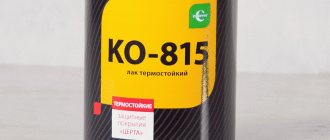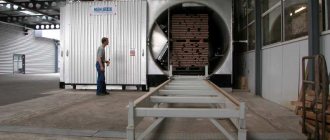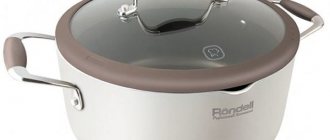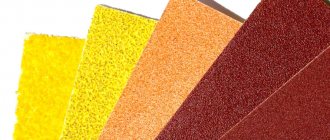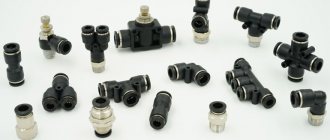Heat-resistant varnish is the optimal means for decorating stoves and increasing their service life. Unlike conventional paints and varnishes, it does not deteriorate under the influence of high temperatures and does not lose its original appearance for a long time.
Oven coated with heat-resistant varnish Source materialyinfo.ru
Scope of application of heat-resistant varnishes
These varnishes are specially produced for:
- Stone and brick fireplaces;
- Walls and stoves;
- Processing of all kinds of fences;
- Building facades;
- Plaster, stone and ceramic tiles;
- Metal side of the fireplace.
The scope of application of varnishes is wide; they can also cover other surfaces in the room. Each varnish has its own characteristics, which must be taken into account when choosing a product.
Characteristics of heat-resistant varnish
The varnishes have a transparent consistency, which allows you to experiment with shade using a certain color.
They contain a resin of organosilicon origin. It is dissolved in a solvent, which is why it has such a characteristic odor.
Varnishes can be applied in several layers, but each layer must be allowed to dry thoroughly (about an hour).
Fireplace varnishes must have the following characteristics:
- Their composition must withstand high temperatures up to 250 degrees.
- Varnishes are supposed to have moisture-resistant properties.
- The product is considered universal and can be used for both external and internal work.
- Varnishes are quick-drying.
- They must have good adhesion to stone, metal and brick surfaces.
- Varnishes are also used to add brightness, contrast and shine to shades.
Siltek-1
Thermolac Siltek-1 allows you to paint the surface of the stove structure without using a chemical primer. When several layers of varnish are applied, the treated surface acquires an aesthetic appearance.
The main disadvantage of this product is its long drying time. On average, this will take about 5 hours.
In addition, a high consumption of the composition is noted here, since it is absorbed into the deep layers of the brick. The photo of heat-resistant varnish for the stove shows popular brands of chemical coating.
Conditions for applying heat-resistant varnish
In order for the varnish to adhere well to the surface, when carrying out varnishing work you need to know and comply with the necessary conditions:
- The product should be mixed well before use.
- Before starting work, the surface to be treated should be thoroughly cleaned of dust and other contaminants, dried and degreased.
- Heat-resistant varnish has frost-resistant properties. It tolerates both low and high temperatures well.
- To apply the product you can use brushes or a roller. If the surface to be treated has a large area, then it is advisable to use a spray bottle.
- For porous surfaces, several coats will be required.
- The product can be used to treat fireplace doors and handles; it has good adhesion to metal.
- Varnishes should be stored in a fireproof place and protected from direct sunlight.
What you need to know when applying
There are a number of factors to consider before painting with heat-resistant varnish. The most significant are the following:
- According to the manufacturer's instructions, the composition can be worked at temperatures ranging from -40°C to +40°C. However, they also recommend painting at +15C - +20°C.
- Before starting work, the composition must be mixed to a homogeneous consistency.
- Painting is performed only on cleaned, dried and primed surfaces.
Safety precautions
When performing varnishing work, you should take safety precautions:
- The use of safety glasses and gloves is mandatory.
- If the product gets into your eyes or skin, rinse them immediately with running water.
- Do not carry out work near flammable places.
- It is important to ensure good air ventilation.
- To protect the respiratory system, you need to use a respirator.
If a fire does occur, sand or a fire extinguisher will come to the rescue.
Popular brands of heat-resistant varnishes
Today the market offers a wide selection of varnishing products. In order to choose a good and high-quality product that would be ideal for treating fireplaces, you need to follow some recommendations.
This will help you make the right choice. You also need to know popular brands of varnishes, familiarize yourself with their composition and scope of application. Varnishes such as KO-85, KO-815 and Siltek-1 have long established themselves as the best among other heat-resistant products.
Varnish KO – 85
The varnish is used to coat surfaces: ceramics, metal and brick. The product is suitable for coating stone and metal fences.
Siltek-1
When working with this product, you do not need to apply a primer to the surface. Even without this, the varnish is applied perfectly and adheres well to the surface. But the product is quite expensive and has uneconomical consumption. For best results, many layers of varnish are required.
KO-815
This varnish is resistant to very high temperatures. Able to withstand changes from 60 to 300 degrees. It has economical consumption, high-quality composition, and applies well.
Features of varnish coating
Yes, the process of building a high-quality stone stove in a house is quite complicated. However, no less attention should be paid to the moment of cladding the structure. It is very important that the heating device fits into the interior of the room as much as possible. This will help create additional comfort and coziness. Some people use finishing materials for this, while professionals go further and coat the surfaces of the stoves with varnish.
The peculiarity of brick is that it does not deform for many years, while being resistant to high temperatures. Regardless of the type of fireplace structure, its surface will heat up, filling the room with a comfortable temperature.
Taking these characteristics into account, manufacturers offer a special varnish for brick ovens, which differs significantly from the standard material. Those homeowners who have tried to open the surface of a structure with ordinary paint or varnish know firsthand how quickly the material loses its primary properties.
Good to know: Which brick oven is the best and most economical
Today, various modern technologies are used in the production of topcoat varnish for surfaces that emit high temperatures. Among the constituent components of the material, you can find organosilicon elements that have the ability to dissolve in an oil environment, as well as a special impregnation, which gives the varnish the appropriate properties.
Presentable looking brick building
The difference between heat-resistant varnishes and regular ones is as follows:
- The level of grip increases.
- The material dries quite quickly.
- No film is formed that will peel off in the future.
- Increased level of resistance to heat.
- Deep penetration into the porous structure of the brick.
Experts in the construction of stoves also note that fireplace varnish dries very quickly, and the higher the temperature, the less time it will take. The first layer of material at 18°C in the room will dry out after 60 minutes. Thanks to this, a sufficient number of layers of material can be applied in one day of light.
Brickwork coated with a protective compound
The presented material is classified as heat-resistant. To confirm this, it should be noted that the temperature the varnish can withstand without losing its original qualities can reach 250°C degrees.
It should be noted that heat-resistant varnish must be applied to the structure to reduce the level of mechanical friction.
How to make your own heat-resistant varnish
Of course, fireplace heat-resistant varnish can be purchased at any hardware store. But you can try to prepare the composition yourself. If you strictly follow the recommendations, you can get a varnish with properties that are in no way inferior to store-bought ones.
To do this you need:
- Take 450 grams of wood tar.
- Heat without letting it boil.
- Add 30 grams of copper sulfate, ground to powder.
- Mix well.
- Apply the finished varnish while hot to the fireplace using a brush.
This varnish dries instantly, is safe from an environmental point of view, gives the surface a beautiful shine and protects it from destruction.
Often after installing a fireplace, the question arises about how to extend its service life. In order for the fireplace to retain its original appearance for a long time, it must be treated with heat-resistant varnish, of course, following all the recommendations specified by the varnish manufacturer.
This will not only protect the surface from destruction, but will also add brightness to the stone or brickwork. Then the fireplace, as the heart of the house, will delight you for a long time with its decorativeness and warm you with warmth during the cold autumn-winter period.
Areas of application
When considering the question of how to choose a heat-resistant varnish, it is worth understanding that it is divided into several types, each of which is optimally suited to a specific type of material.
Using this varnish, you can treat stoves with brickwork, metal or even ceramic tiles; there are a huge number of different compositions on sale.
There is even a heat-resistant wood varnish, which additionally serves as fire protection for the material. It can be used not only for processing stoves or fireplaces, but also for processing important structural elements, individual corners in the house, for example, near the electrical panel.
